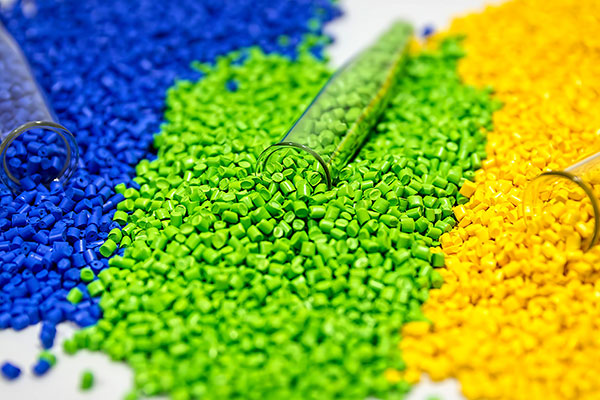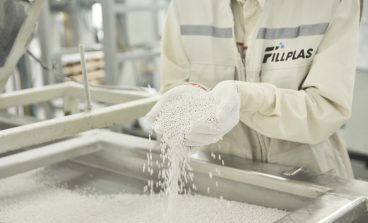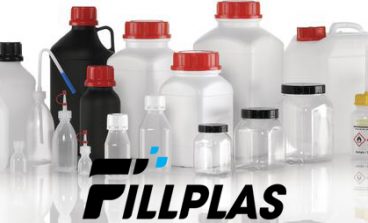
Colorant, or color additive, is a substance that is added or applied in order to change the color of a material or surface. Colorants can be used for many purposes including printing, painting, and for coloring many types of materials such as foods and plastics. Colorants work by absorbing varying amounts of light at different wavelengths (or frequencies) of its spectrum, transmitting (if translucent) or reflecting the remaining light in straight lines or scattered.
Colorant forms include dry color, color or pellet concentrates, liquid color, and pre-colored resin.
Colorants in dry colorant form
Dry colorants are powders composed of one or more pigments or dyes. They are supplied in pre-weighed packets and must be compounded and dispersed into the resin. Dry pigments are usually dispersed in polypropylene by batch blending; addition of wetting agents helps the pigment adhere to the resin surface. Careful attention is required for consistent color from batch to batch, and accurate weighing and blending are necessary for long-term, uniform color. Dry colorants are most often used for short runs, emergency situations, and the rotational molding of polyethylene. Dry colorants can be dusty and dirty during handling. Anti-dusting agents are available from suppliers, as well as closed packaging systems that hook up to pneumatic conveying equipment.
Dry colorants are the most economical colorants. They provide the largest selection of colors and use a minimum of warehouse space. They are difficult to disperse, however, and dusting and cross-contamination problems discourage their use. Higher costs may result from problems with clean-up, color changes, scrap generation, and OSHA regulations concerning dust.
Colorants in color concentrate form
Color concentrates are colorants dispersed in a resin carrier that is formulated for use with a particular polymer family. In order to obtain a melt flow similar to that of the polymer, the carrier resin frequently has a lower melt flow than the polymer in order to compensate for the effects of pigments on melt flow. Low-density polyethylene is frequently used as a carrier; however, for demanding applications, polypropylene should be used to ensure optimum processing and compatibility. The form of the color concentrate can be matched to that of the polymer to be colored and includes pellets, beads, cubes, wafers, micro-beads, and chips.
This form can contain 10–80% colorant, depending on the application requirements, the pigment used, and the compounding equipment, and are added to the polymer at a level of 1–10%. Concentrates can be blended either by batch blending or by automatic metering at the processing equipment. Letdown ratios of 100:1 to 10:1 (polymer matrix: color concentrate) can be accurately metered with modern equipment, and other additives can be incorporated during pigment compounding.
Color concentrates are the most popular form of colorant for in-house coloring. They are dustfree, easy flowing, and easy to meter. They require little warehouse space, and color changes are relatively easy. Newer concentrates include those designed for specific applications, such as injection-molded polypropylene battery cases, and concentrates that can be used in a wide variety of polymers, simplifying inventory for plastics processors.
Colorants in liquid color form
Liquid color is composed of pigment in a non-volatile liquid carrier. Liquid carriers include mineral oils and complex fatty acid derivatives and can contain surfactants for easier dispersibility and clean-up. A range of viscosities are available, from maple syrup to gel-like consistencies, and good dispersion can frequently be obtained with high pigment loadings (10–80%); higher loadings are possible with liquid color than with color concentrates. High pigment loadings can result in letdown ratios of greater than 100:1. Usually, the highest loading possible is used, both for the economy and to minimize the amount of carrier added to the matrix polymer. The carrier can affect polymer properties and can lubricate the polymer, affecting process cycling and back pressure in injection molding.
Liquid colorants are compatible with many plastics; however, they require special metering equipment and are most cost-effective for long runs. They are used in injection molding and extrusion and are usually pumped in below the hopper at the throat. Consistent color levels can be obtained by electronically matching the metering speed of the pump with that of the extruder. Extreme hot or cold temperatures can cause adverse effects on the liquid colorant, and spills and disposal of used containers may be costly. Other additives can be added to the liquid concentrate to tailor it for a specific application.
Colorants in pre-colored resins form
In pre-colored resins, the colorant is already compounded into the polymer, and no additional compounding is necessary before processing. Pre-colored resin can be in the form of pellets, beads, or fine powder. The best dispersion is usually obtained with pre-colored resins; as little as 0.25–2 weight % pigment is necessary for non-filled polymers. Pre-colored resins are more expensive, however, and require more warehouse space than other forms of colorant. They are useful for hard-to-color materials such as highly-filled plastics, engineering plastics, and polymers with high inherent color.
Fillplas has the type of color concentrate which is color masterbatch. Please kindly visit our website to have more information about this kind of material.



